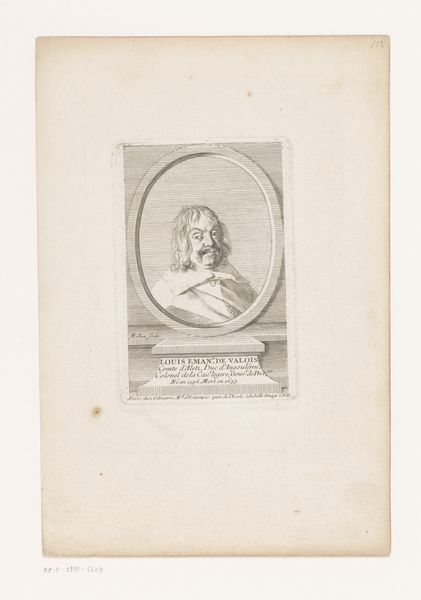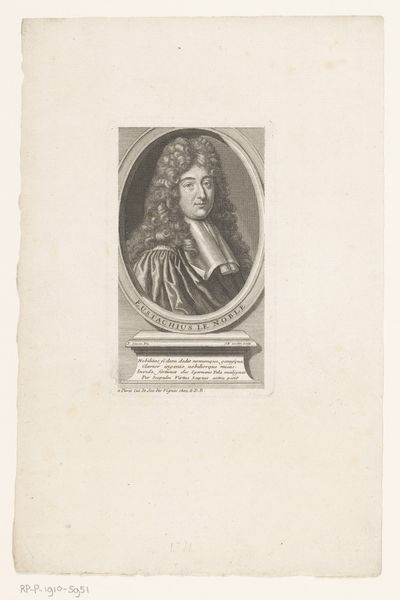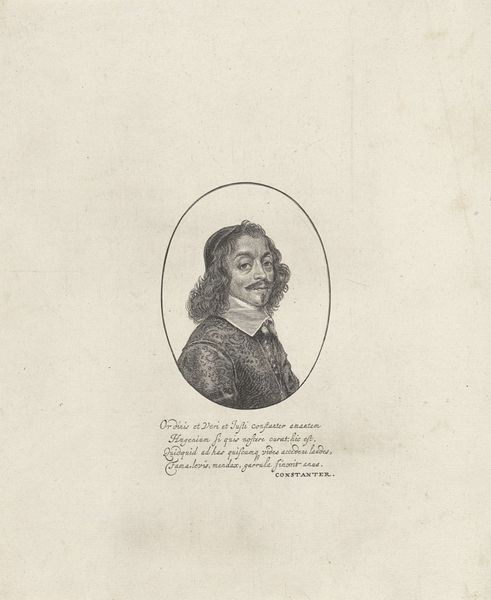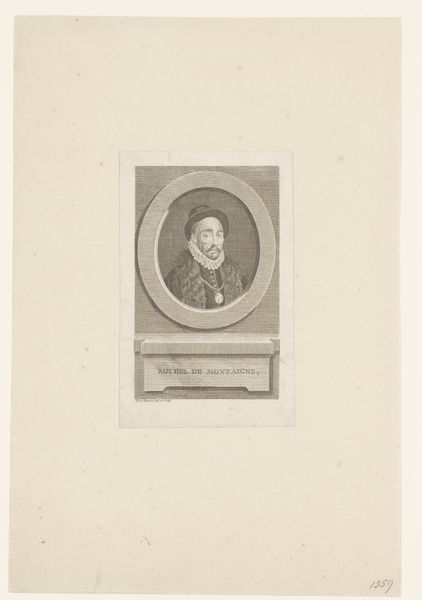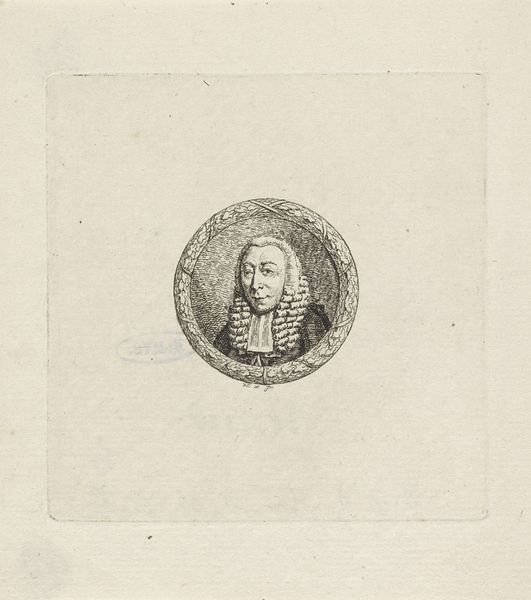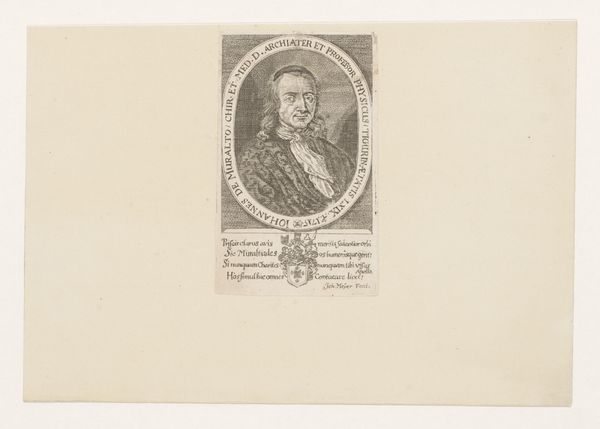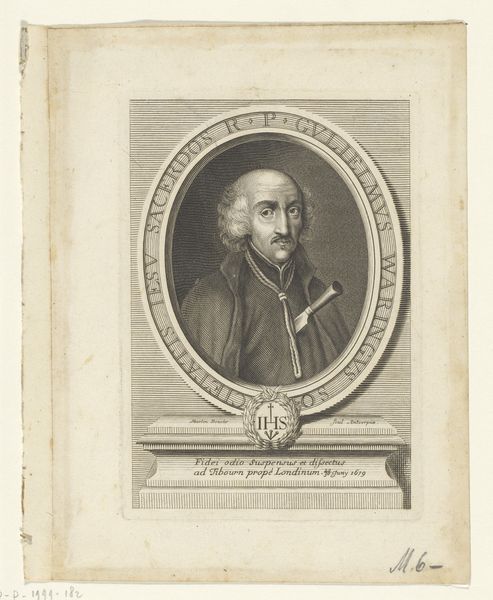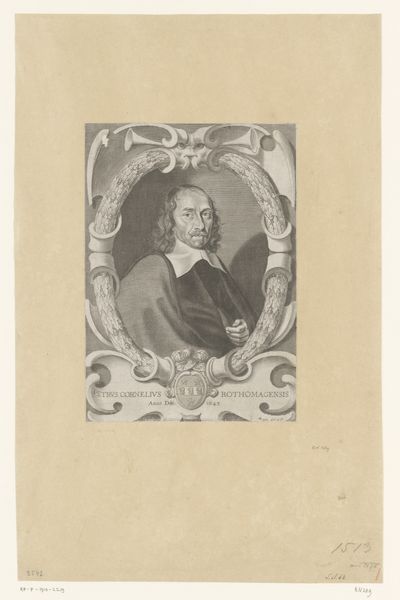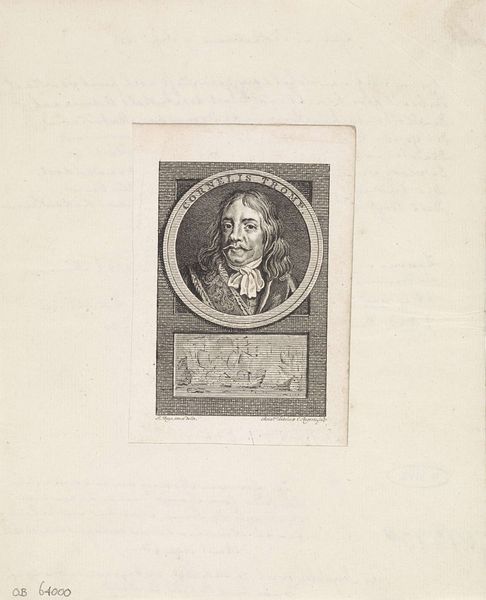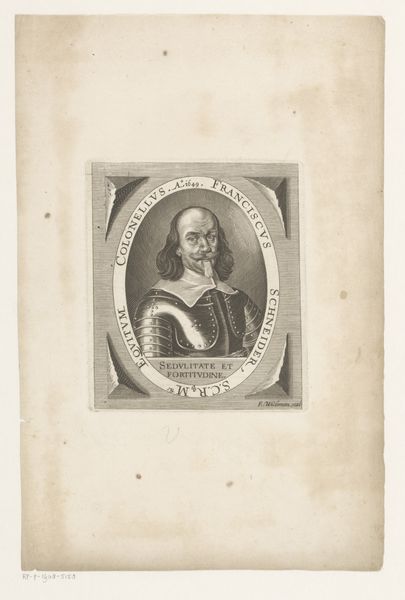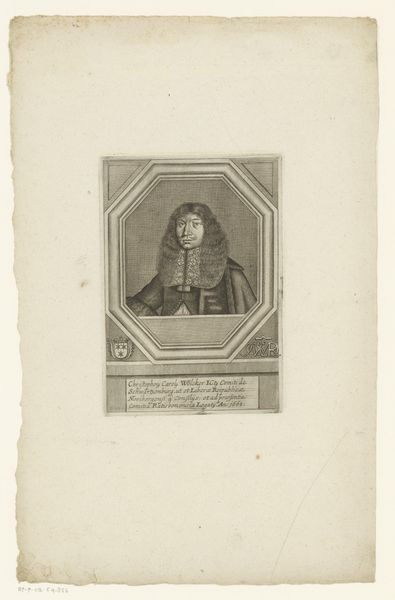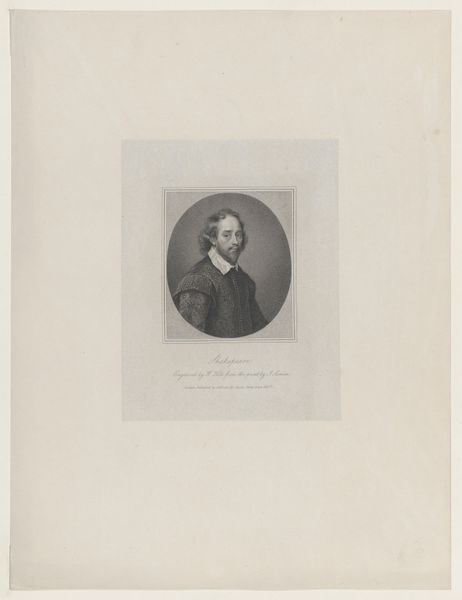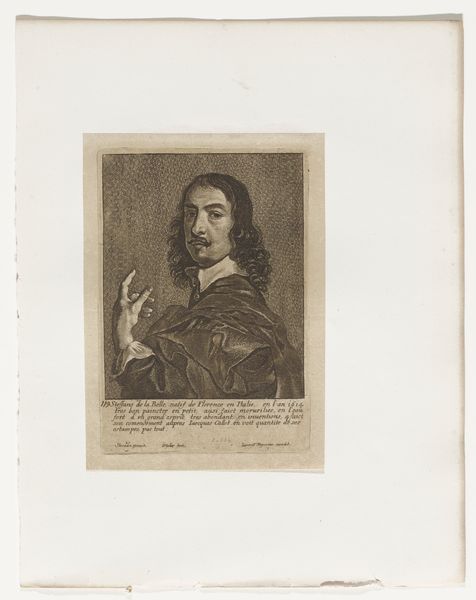
Dimensions: height 168 mm, width 114 mm
Copyright: Rijks Museum: Open Domain
This engraving of Jean-Antoine de Mesmes, Comte d'Avaux, was created by Reinier Vinkeles. Note the laurel wreath motif adorning the base of the portrait; this symbol, steeped in classical antiquity, signifies triumph and honor. Consider its evolution: In ancient Greece, laurel crowned victorious athletes and heroes, a tradition echoed in Roman celebrations. Over time, the wreath's significance broadened, representing academic and artistic achievement. Think of Renaissance paintings, where laurel wreaths encircle the heads of poets and scholars, immortalizing their wisdom and talent. Now, observe how Vinkeles subtly incorporates this motif. It speaks not only to the Comte d'Avaux's personal accomplishments but also to the broader cultural values of the time. The wreath, an emblem of aspiration and success, resonates with a deep-seated human desire for recognition and remembrance. Its presence here engages us on a psychological level, stirring feelings of admiration and perhaps even envy. The laurel wreath, therefore, is not merely a decorative element but a potent symbol, continually reborn and reinterpreted across the ages.
Comments
No comments
Be the first to comment and join the conversation on the ultimate creative platform.
